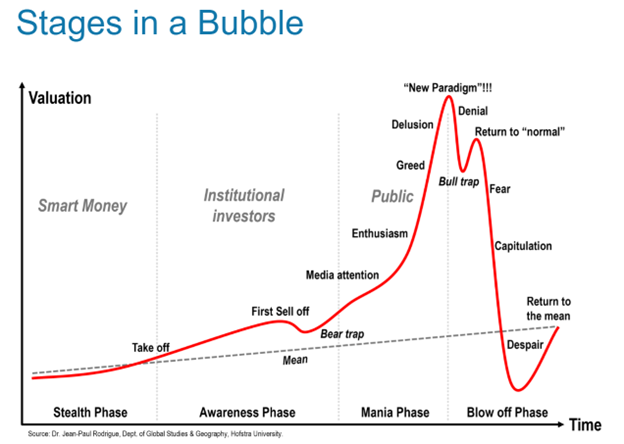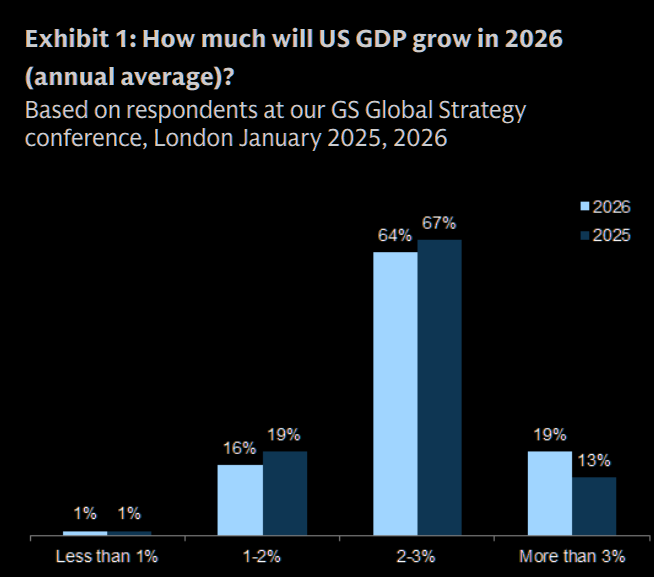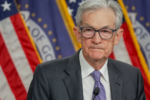Overview: The dollar is mostly consolidating yesterday's losses ahead of month-end and the US income and consumption data. The PCE core deflator may have risen by 0.2%, the least this, year, but the year-over-year rate is expected to be steady at 2.8%. The dollar is recovering from a five-day low against the yen recorded yesterday near JPY156.40 and is near JPY157.30 in the late European morning turnover. The yen's retreat and a disappointing Chinese PMI have weighed on the yuan. The euro is bid after the firm year-over-year CPI reading. Sterling is little changed, in a narrow range above $1.2700. Emerging market currencies are mixed. The ANC looks to have lost its majority in South Africa and the rand is slightly lower today and is off around 2% this week. It is the weakest in the emerging market space, closely followed by the Mexican peso, which is off 1.9% this week. Mexico votes on Sunday.
Bond yields are mostly firmer. In Europe, benchmark 10-year yield are up 3-4 bp. That brings this week's increase to around 12-15 bp. The 10-year US Treasury yield is slightly firmer at 4.55%. This is about a nine-basis point increase on the week, but off the 4.63% high seen mid-week. Asia Pacific equities were mixed. Japan, South Korea, and Australia rose among the large markets. The index that tracks mainland shares in Hong Kong, fell 1.1% today to bring the week's loss to 3.2%. Europe's Stoxx 600 is slight changed buy firmer. It is off almost 0.8% this week, its second consecutive weekly losses. US index futures are lower, and the S&P 500 and NASDAQ are likely to snap a five-week advance barring a strong recovery today. Gold is little changed, hovering around $2342. It settled near $2324 last week. July WTI settled last week near $77.70. It traded between $77.50 and $80.60 this week, with the low seen earlier today. It is slightly below $78 now.
Asia Pacific
Japanese economic data confirmed a recovery is taking hold after the contraction in Q1. Still industrial output unexpectedly slipped by 0.1% in April after rising 4.4% in March. Retail sales jumped twice as much as expected. The 1.2% increase follows a 1.2% decline in March and were up about 0.7% in the first quarter. The unemployment rate was steady at 2.6%. Meanwhile, driven by higher energy costs, Tokyo's May CPI rose to 2.2% from the drop to 1.8% in April (from 2.6%) in March spurred by the high school tuition waiver. The core rate, which excludes fresh food rose to 1.9% from 1.6%. This would be consistent with a national core reading rising closer to 2.8% from 2.2%. This, coupled with the yen's continued weakness, will likely strengthen the market's conviction that the BOJ will hike rates by 10 bp at the end of July. Separately, recall that earlier this week, the IMF revised up its forecast for China's growth this year from 4.6%, a few weeks ago, to 5.0%, citing the strong start to the year and recent moves to support the property sector. China's May PMI disappointed. The manufacturing PMI surprised by falling back below the 50 boom/bust level to 49.5 a three-month low. The non-manufacturing PMI slipped to 51.1 from 51.2. It is the second consecutive decline. The composite also for the second consecutive month. At 51.0 it is slightly above the year's low set in January and February at 50.9. It finished last year at 50.3.
The market turned cautious as the dollar approached JPY158, which is where the BOJ is believed to have last intervened. This coupled with the broadly softer US dollar and the biggest decline in 10-year Treasury yields in two weeks (six basis points) pushed the dollar to a one-week low against the yen slightly below JPY156.40. The greenback recovered, not with the Japanese data, but a few hours later and reached session highs in the European morning near JPY157.40. Data from the BOJ confirms JPY9.8 trillion (~$62.2 bln) intervention in the past month. This is largely in line with market expectations. The Australian dollar recovered from a marginal new two-week low near $0.6590 and returned to almost $0.6650 yesterday. Any higher, and sights would be set on the recent high above $0.6700. It is trading in narrow range today, roughly $0.6625-$0.6650. It settled slightly below $0.6630 last week. On the same day that the Financial Times warns of downside pressure building on the yuan, the yuan posted its biggest daily advance (~0.25%) in nearly three weeks. The decline in US rates and the recovery of the yen, arguably, facilitated the yuan's recovery. The dollar rose to nearly CNH7.2760, its highest level since mid-April on Wednesday and traded at a six-day low (~CNH7.2475) yesterday. The weak PMI and the setback for the yen saw the yuan give up about half of yesterday's gains. Against the offshore yuan, the dollar found support a little below CNH7.25 and is trading near session highs now near CNH7.2640. The PBOC set the dollar's reference rate at CNY7.1088 (CNY7.1111 on Thursday), which is the lowest this week. The average of Bloomberg's survey was CNY7.2398 (CNY7.2494 yesterday).
Europe
In an important way, the tick up in the eurozone's May CPI does not matter. A rate cut by the ECB next week, its first, is seen to be as done of a deal as these things get. In fact, in the derivatives market is as confident that the ECB cuts as the Fed stands pat when it meets on June 12. The 0.2% month-over-month increase in CPI translated into a 2.6% year-over-year rate, up from 2.4% in April. The median in Bloomberg's survey was for 2.5%. The core rate rose to 2.9% from 2.7%. Perhaps the reason that there seems to be a disagreement among ECB officials going forward is that the year-over-year rate may exaggerate the moderation in price pressures. The 0.2% increase in May means that at an annualized rate in the first five months of the year, eurozone inflation rose by 4.3%. Consider the base effect going forward. In June-September 2023, eurozone's CPI rose at an annualized rate of 3%. However, the real challenge will be Q4, when last year prices fell at an annualized rate of 1.2%.
The euro briefly traded below $1.0790 yesterday for the first time since May 14. We noted a converge of technical tools pointing to important support near $1.0785. The euro sprung higher and traded firmly throughout the European and North American session. It set session highs near $1.0845 reached $1.0850 today in the European morning. Yesterday's recovery was seemingly aided by the downward revision in Q1 US GDP. On the upside, we note two sets of options expire today. The first is at $1.0875 for almost 800 mln euros, and the other set is at $1.09 for around 850 mln euros. The price action reinforces the importance of support around $1.0785 and Tuesday's high near $1.0890 denotes the upper end of range. The euro snapped a five-week advance last week and settled slightly below $1.0850. Sterling approached support near $1.2675 and recovered to almost $1.2750 yesterday. It is trading softer and in a narrow range of about $1.2700-$1.2735. A move above $1.2750 leaves little standing in the way of a retest on $1.2800, the two-month high set earlier this week. Sterling has not settled above $1.28 since March 11. Sterling settled slightly above $1.2735 last week. A close above there today would be the third consecutive weekly gain, the longest this year, and would be the fifth weekly gain in the past six.
America
In this cycle, the US CPI has stolen the thunder from the PCE deflator that the Fed targets. Based on the CPI and a few components in the PPI, economists more accurately forecast the PCE deflator than CPI itself. The takeaway is the headline and core PCE deflators are expected to be unchanged from March at 2.7% and 2.8%, respectively. Little new information is contained for investors or policymakers. Meanwhile, slower gains in both income and consumption in April would be consistent with other high-frequency data, which mostly disappointed in April. The GDP revisions warn of the risk of downward revisions to the personal consumption expenditures in Q1. However, we suspect that the weak data in April overstates the slowdown and expect May data to be sequentially better. Also, although Q1 GDP softer than economists expected, Chair Powell has commented that the real final sales to private domestic parties (which excludes, trade, inventories, and government spending) was a better signal and that was still solid, a little below 3%. Looking further ahead, the median forecast in Bloomberg's survey for nonfarm payrolls has slowly fallen and now is 175k, unchanged from April. The early forecast for May CPI is for a 0.1% increase, which would be the smallest in seven months, but would leave the year-over-year rate unchanged at 3.4%.
The US dollar gave back most of Wednesday's gains against the Canadian dollar on Thursday. The upper end of this month's range was around CAD1.3750 and it approached CAD1.3735 yesterday. It proceeded to move lower and returned to CAD1.3660. It is marginally extended the move today, recording a low slightly below CAD1.3655. Wednesday's low was near CAD1.3640. This week's price action reinforces the importance of support near CAD1.36 and the cap around CAD1.3750. The greenback's three-day surge against the Mexican peso extended to MXN17.13 yesterday. The week's low was set Tuesday near MXN16.6340. The dollar stalled in front of the 200-day moving average (~MXN17.1560) and fell back to around MXN16.91 before finding solid bids. The dollar has held above MXN17.00 so far today but has not traded much above MXN17.07. Mexico goes to the polls Sunday. Even if the polls have consistently shown Sheinbaum will most likely be elected president, the outcome of the legislative election may be more important in term so the market's reaction.
Tags: #USD,China,Currency Movement,ECB,EMU,Featured,Federal Reserve,inflation,Japan,newsletter,US



























